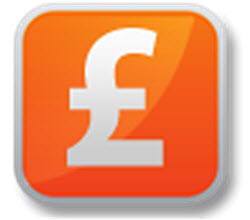The pound sterling (GBP) is the official currency of the United Kingdom, Isle of Man, Jersey, Guernsey, the British Antarctic Territory, Tristan da Cuncha, and South Georgia and the South Sandwich Islands. It is commonly referred to as the British pound or just pound, although in some situations just saying pound can cause confusion since there are a number of nations that have currencies called pound (Lebanon has the Lebanese pound, Syria has the Syrian pound, and so on).
 Among forex traders and other investors and speculators, the term sterling is more commonly used than pound to denote GBP, to avoid confusion with other pound-currencies. Ster. and stg. are both accepted abbreviations. When trade takes place in pence, the term pence sterling is employed, or the abbreviations GBX or GBp.
Among forex traders and other investors and speculators, the term sterling is more commonly used than pound to denote GBP, to avoid confusion with other pound-currencies. Ster. and stg. are both accepted abbreviations. When trade takes place in pence, the term pence sterling is employed, or the abbreviations GBX or GBp.
At the time of writing (May 2015), the pound sterling is the fourth most traded currency on the forex market, behind the USD, the EUR and the JPY. hese four currencies make up the currency basket used by the International Monetary Fund (IMF) to calculate the value of IMF:s special drawing rights. It should also be noted that the GBP is a very popular reserve currency; almost as popular as USD and EUR and more popular than JPY.
Facts about the pound sterling
- The central bank for the pound sterling is the Governor and Company of the Bank of England.
- The ISO-4217 currency code for the pound sterling is GBP.
- The symbol £ denotes the pound sterling.
- This is one of the world oldest currencies that is still in use. During this long history, the British pounds have been commodity money, representative money and fiat money, respectively. Today, the British pounds are fiat money.
- 1 pound sterling is comprised of 100 pence. (The singular form of pence is penny.)
- Among forex traders, you may encounter the nickname cable. During the second half of the 19th century, information about the exchange rate for USD/GBP was sent between Europe and the United States over the transatlantic telegraph cable. Thus, this currency pair developed the nickname cable.
Monetary policy and the issuing of GBP
The Governor and Company of the Bank of England, commonly known as Bank of England, is authorized by the British government to set and enforce monetary policy for the GBP.
Her Majesty’s Treasury (HM Treasury), also known as the Exchequer, has the right to give orders to the committee that sets the monetary policy, but only if it is necessary with regards to the public during extreme economic conditions. The Exchequer is similar to what in most other countries is called the ministry of finance. Orders from The Exchequer to the committee will not remain in force for more than 28 days unless they are approved by parliament.
In England and Wales, only the Bank of England is allowed to issue GBP. In Scotland, three banks may issue GBP: Bank of Scotland, Royal Bank of Scotland and Clydesdale Bank. In Northern Ireland, four banks may issue GBP: the Bank of Ireland, the Northern Bank, the Ulster Bank and the First Trust Bank. The banks in Scotland and Northern Ireland are not allowed to issue GBP at their own discretion; they must follow the direction of Bank of England.
